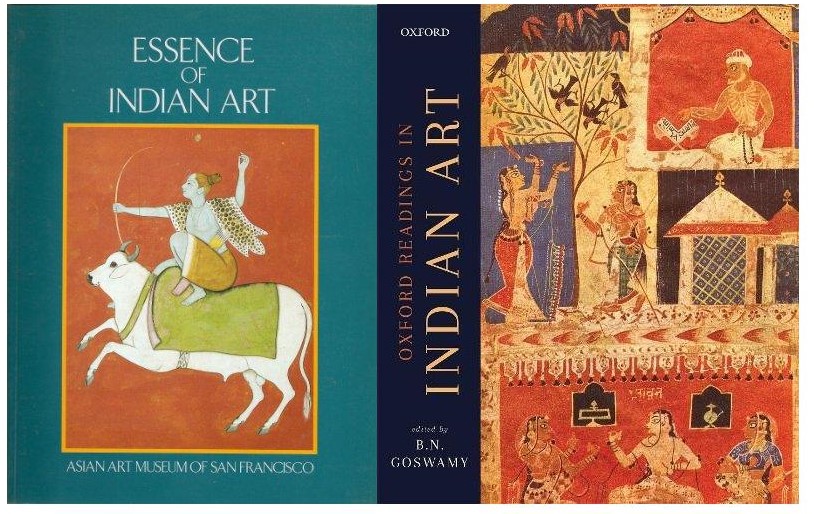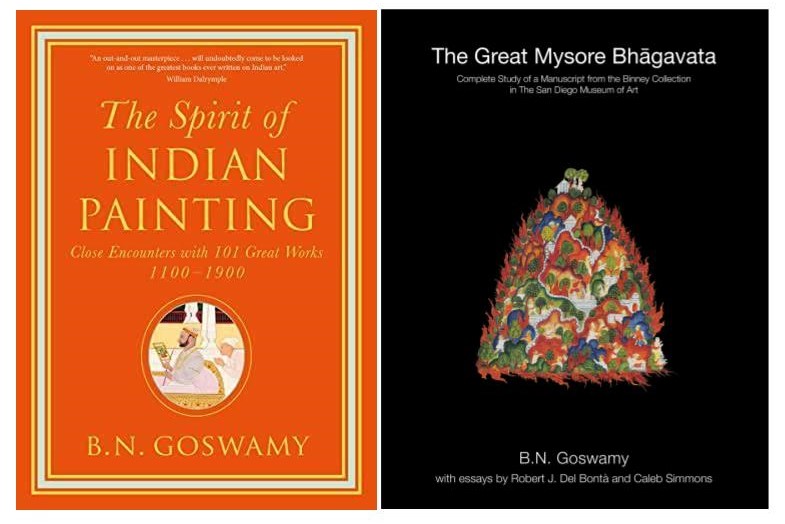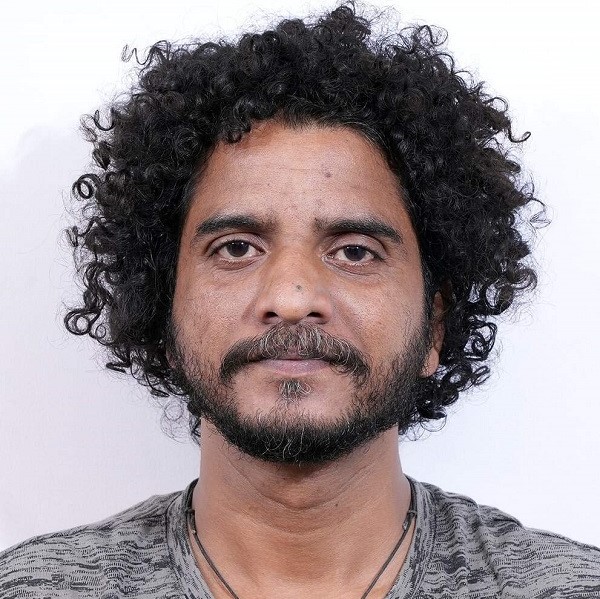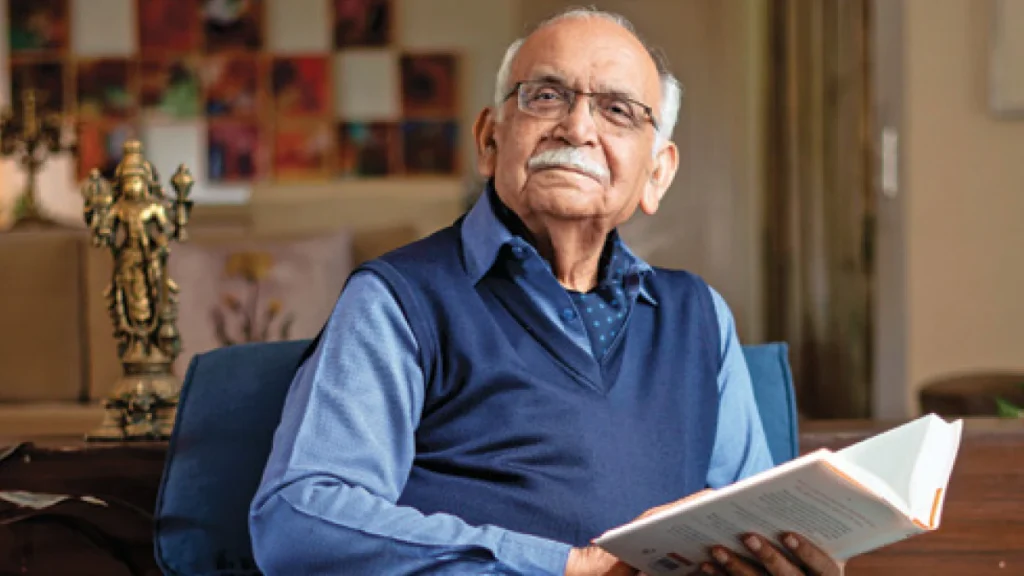In terms of Indian art historical writing, who was BN Goswamy? Goswamy is considered India’s finest specialist on miniature art, a prominent art historian and critic who has made significant contributions to the study and appreciation of Indian art, and he has produced over 25 volumes on art and culture. According to B N Goswamy, who oversaw the study of Indian miniature paintings, particularly those by Pahari artists, a miniature painting was intended to be read rather than hanging on the wall where it would be out of the unaided eye, much like a book.
Goswamy, a master storyteller and acknowledged authority on miniature painting in India, stated in an interview that “it is necessary to meticulously examine the surface to understand the striking colours, complexity, and nuances properly.” He has dedicated much of his research career to the study of Pahari miniature painting; publications include the seminal paper “Pahari Painting: The Family as Basis of Style” (1968) and the well-crafted book “Nainsukh of Guler: A Great Indian Painter from a Small Hill-State” (1997). Goswamy discovered the ancestry of well-known miniaturists, including Pandit Seu, Nainsukh, and Manaku and published five works in miniature research.
Essence of Indian Art
 B N Goswamy discovered in his seminal work Essence of Indian Art (1986) that Indian art and aesthetics extend beyond the Rasa, the art theory produced in India since ancient times. Rasa is the final and finest sense of the Indian mind, applied in all art and life; as Goswamy stated in this book, ‘rasa comes to signify a state of heightened delight, in the sense of ananda, the kind of bliss that can be experienced only by the spirit’ (p 19). From the beginning to the end of this book, Goswamy claimed that the Rasa is the foremost element in the creation and appreciation of Indian art,
B N Goswamy discovered in his seminal work Essence of Indian Art (1986) that Indian art and aesthetics extend beyond the Rasa, the art theory produced in India since ancient times. Rasa is the final and finest sense of the Indian mind, applied in all art and life; as Goswamy stated in this book, ‘rasa comes to signify a state of heightened delight, in the sense of ananda, the kind of bliss that can be experienced only by the spirit’ (p 19). From the beginning to the end of this book, Goswamy claimed that the Rasa is the foremost element in the creation and appreciation of Indian art,
Goswamy states that the concept of Rasa, which encompasses performance, music, painting, sculpture, and other art forms, is relevant in art. “That Rasa is what art is all about may not be stated explicitly in so many words by everyone, but it is what a viewer is looking for in a work of art” (p. 20).
A Place Apart: Painting in Kutch, 1720-1820
In this book, Goswamy and Anna L. Dallapiccola bring Kutch’s visual story and history through the paintings of Kutch between 1720-1820. The people of Kutch are travellers and connect with many other countries; their impressive tradition of seafaring and that element brought the nuance of art to the Kutch region in a very early period.
According to Goswamy, the Mughal connection was a source of great pride at the Kutch court, for, apart from surviving vaguely in local tradition, it took clear visual form. As many as eight ruler figures are arranged in four groups in two different paintings, much like the ‘family group’ of the Raos of Kutch. Mughal family groups inspired the making of similar family groups in the eighteenth century (p 18). In this book, Goswamy and Dallapiccola find the routes of Kutch paintings in Indian art and make them renowned.
Goswamy and Dallapiccola notice that Men dominate the world of the Kutch painters. Of women’s influence on state affairs, there was undoubtedly a great deal. But this influence has been exercised subtly, from behind the scenes, primarily through men who could be trusted and who, being men, could be more visible at the court (p 25).
The aspects are invisible because historical knowledge in art has changed both before and after BN Goswamy’s influence. What is seen is carefully examined to uncover what is missing, and questions such as “Why did the princess venture out and why not make a public appearance?” are raised.
Painters at the Sikh Court
One area of analysis is BN Goswamy’s landmark work, Painters at the Sikh Court, which examines the wealth and patronage of the Sikh courts. In this study, Goswamy uses twenty documents from Persian and Urdu that periodically depict the narratives of Punjab just after the British occupation of the Kangra hills and significantly from one family. Goswamy bringing the records from the hills is not over-abundant, but together information on some of the dates of the six painters who find mention in these documents from the registers of the priests at centres of pilgrimage visited by members of this family and from the successive settlement records of 1868-92 (p 4).
 Through this, documents, Goswamy argues, need to include information on the style of the artists to whom they relate. They make not even an oblique reference to their work, but this is no excellent loss, for we already know that style. They are significant for other things they tell us of, for we know so little about them now (P 4).
Through this, documents, Goswamy argues, need to include information on the style of the artists to whom they relate. They make not even an oblique reference to their work, but this is no excellent loss, for we already know that style. They are significant for other things they tell us of, for we know so little about them now (P 4).
Life at Court: Art for India’s Rulers, 16th-19th Centuries
In this edited book, Goswamy wrote a small but seminal essay titled Of Devotee’s and Elephant Fights: Some Notes on Subject Matter in Rajput and Mughal Painting. In this essay, Goswamy sheds light on the photograph and negatives from the corner of the Jaipur Royal Palace depicting Sawai Maharaja Ram Singh II with his favourite mistress. Those photographs are the evidence of the relationship of the Maharaja with his mistress and portraying them during their sexual congress that involved the variations and innovations that Indian erotic texts speak of in such detail.
Goswamy looks into those photographs, analysing the royal palace’s secrecy and life. Goswamy argues that to take these photographs during Maharaja’s intimacy with his mistress, and he needed a photographer in that room with an assistant in nineteenth-century photography.
In addition to his studies in Indian art history, Goswamy has a lengthy and illustrious academic career. He spent several years as an art history professor at the Panjab University in Chandigarh, India, before joining Harvard University’s Department of Art and Archaeology as a professor of art history. In addition to his scholarly pursuits, Goswamy has organised exhibitions, which have improved how Indian art is shown and understood. His well-chosen collections frequently shed light on the cultural and historical backgrounds of the art pieces.
B. N. Goswamy is highly esteemed for his deep understanding of Indian art and ability to convey the diversity of Indian creative traditions. His contributions have significantly influenced art history, both domestically and abroad. B. N. Goswamy’s contributions have greatly enhanced the understanding of Indian art, and his publications are still widely read and used to study India’s rich artistic legacy.
Farewell to a Luminary: Art historian and Critic BN Goswamy Passes Away

Krispin Joseph PX, a poet and journalist, completed an MFA in art history and visual studies at the University of Hyderabad.





